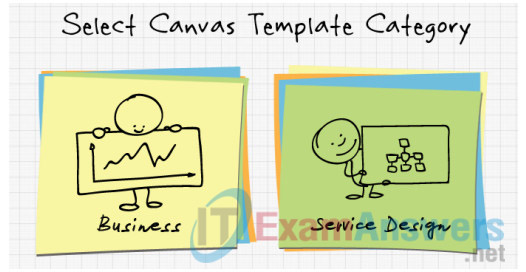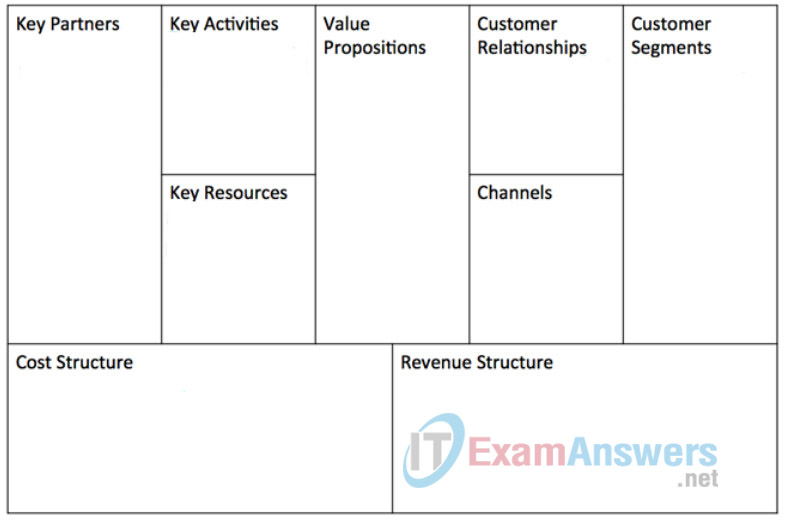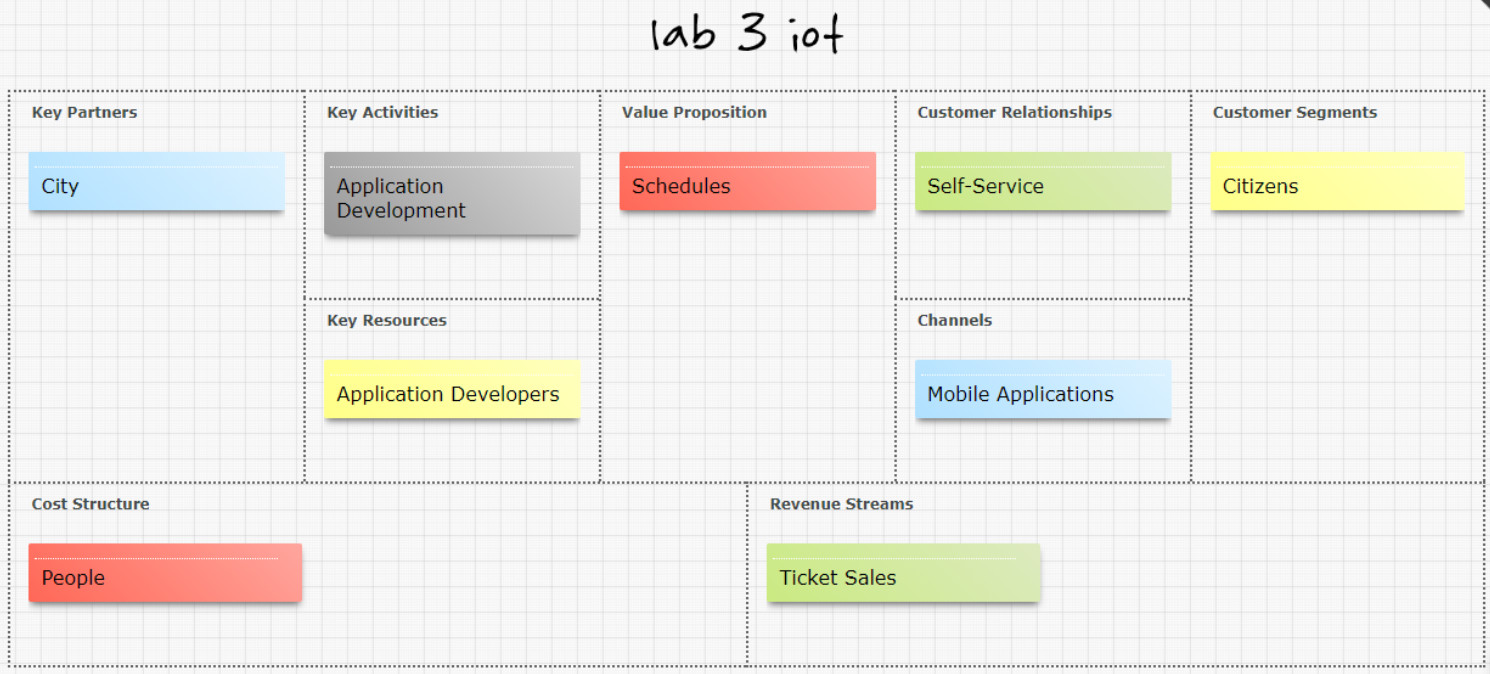6.4.1.7 Lab – Diagram Business Models (Instructor Version)
Objectives
In this lab, you will diagram an IoT business model.
Background / Scenario
The IoT is comprised of the networked connections between people, data, and things. These networked connections require the six pillars of the IoT in order to function properly. An IoT business incorporates the six pillars to deliver more relevant and valuable products and services to the customer. The interactions between the elements in the six pillars create a wealth of new information. The pillars interact in a way that establishes three main connections in the IoT environment: people communicate with people (P2P), machines communicate with people (M2P), and machines communicate with machines (M2M).
In this activity, you will design the components of each business model by filling out the business model canvas that provides products or services to these individuals.
Required Resources
- PC with Internet Access
Part 1: Canvanizer
Canvanizer (https://canvanizer.com/) is an online collaborative canvas tool that can be accessed by multiple users to edit and save changes. You can share and brainstorm ideas with your team while structuring your ideas on a canvas.
Step 1: Create your own canvas
a. Navigate to http://canvanizer.com.
b. Click Create Canvas to create a new canvas.

c. Select the Business template.

d. Choose the Business Model Canvas.

e. Input the required information. Click Start Canvanizing! to start diagramming your business model canvas.
f. Click the hyperlink to your editable canvas. The hyperlink to your canvas is also sent to the email address you supplied.
Part 2: Diagram IoT Business Models
Use the Business Model Canvas from Canvanizer or the partially filled out canvases below to diagram the following business models.
Triathlon Athlete
Thomas is training for the next triathlon season. He would like to improve his times in all three events for the next season. Thomas purchases a smart watch to log all of his training sessions. The apps on the smart watch track his training and upload the data to a website. From the website, Thomas can share his workouts with his coach and friends. He also provides information about his activities and the conditions of his running, biking, and swimming equipment through the applications.
The apps use the information Thomas provided to alert him when it is time to replace his running shoes. The apps present him with a list of running shoes and related customer reviews. Various local and online retailers bid for Thomas’ business. He chooses the same running shoes that he is using for training. The manufacturer gives him a discount as a repeat customer and ships the shoes to his residence for his convenience. The manufacturer also recommends a few organizations that will recycle old running shoes in his area. As the first triathlon event draws near, his apps provide advice and product recommendations to help Thomas perform his best.

Are there other main points to consider in the Triathlon Athlete example? Feel free to explore the possibilities.
New in Town – Connected Transportation
Anya has relocated to a different city for her new job. Her new city is a smart city, and she is exploring how she can navigate the city’s connected transportation. Using the city’s website, Anya discovers that she can download an app that provides real-time information regarding the mass transit system and the roadways. She decides to use the app before her first day at work.
When Anya is exploring the city’s website, she finds out about a concert across the bay. She purchases a ticket using the app, and a receipt is sent via email. She plans to ride the ferry and city buses to her destination. The app provides Anya with the bus and ferry schedules that will work best for her. The app also alerts her when she should depart in order to arrive at the show on time.
During her ride to the show, Anya uses the Wi-Fi connection to explore the city services and amenities. The app alerts her that there is a traffic incident on her current route and suggests an alternate bus route that will allow her to arrive at the venue faster. At the conclusion of the show, the app recommends future activities based on her feedback about the concert.
Consider the following points in diagramming this Connected Transportation business model:
- Application Developers
- Application Development
- Citizens
- City
- Mobile Applications
- People
- Self-Service
- Ticket Sales
Diagram this Shopping business model:


Shopping
Juan runs his family business from a home office and is a parent to three school-age children. Juan has upgraded some of his household devices. These new devices alert him when the supply is low, and can order the supply automatically. Juan opens an account with a provider and authorizes the automatic purchase and shipping of supplies through the website.
In his laundry room, the new smart washer and dryer monitor the amount of laundry supplies used, anticipate when the laundry supplies will begin running low, and automatically order supplies. Smart appliances are making Juan’s life easier in the kitchen too. The coffee maker can order coffee beans and filters automatically. His connected filtered-water pitcher measures the amount of water that passes through its filters and orders a new filter at the right time. In his office, the printer measures its ink levels and places an order for more ink when needed. All of these orders are placed automatically and shipped to him at the right time. Now, he can spend more time with his children and has the necessary supplies to smoothly run his household.
Diagram this Shopping business model:


